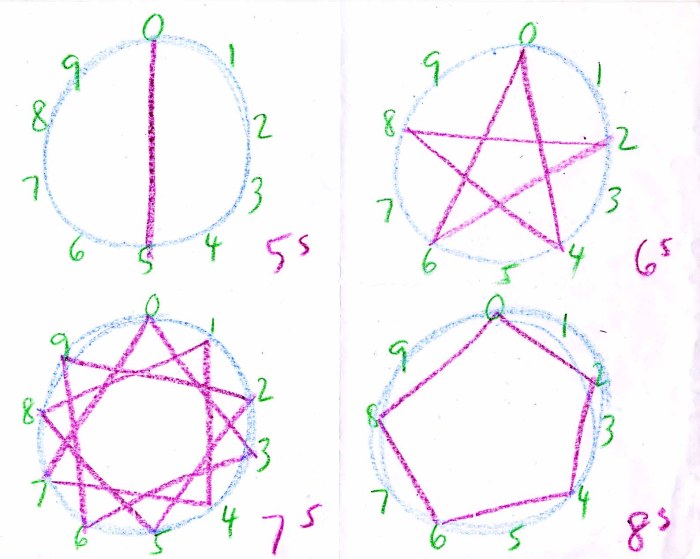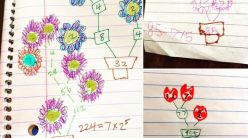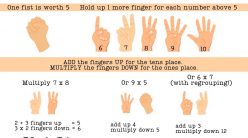
There’s no discounting the importance of memorizing math facts. Kids can understand math concepts perfectly but if they don’t remember their addition or multiplication tables it can leave them frustrated and feeling like failures.
The good news is that there are lots of fun ways to help them memorize their math facts. Here are 22 to try.
- Download free math games and stories. Ellen McHenry’s Basement Workshop has several fun printable math games and freebies like “Storm the Castle” and “Mr. Pig’s Magic Math.”
- Play math toss. Toss a balloon or ball around the room at your kids. As you toss, call out a math fact. Whoever you toss to has to shout out the answer before catching or bouncing back the balloon/ball (or call out the answer before passing it on).
- Make trading cards. Kids love collecting things, and this is a fun way to combine art with math and add a social element. Invite the kids to make math fact trading cards, specifically with themes and colors that suit them (or suit each number family) and then to trade them with siblings or friends who also take part. Put out some great art supplies and invest in good cardstock or purchase Artist Trading Card canvases at craft stores like Michael’s to have really professional results.
- Play free computer games like Timez Attack.
- Make counting stars. These artistic mathematical representations are a wonderful way to visually reinforce multiplication facts. Here is one way to do counting stars (kids should quickly notice that a different geometric shape will be made by different multiples — for instance, fives just go down and back and down and back since the ones digit will always be 0 or 5, while fours and sixes make the same star shape, among others) and here is another (this one just makes a clock-like grid and fills in the multiples). Be sure to hang these up where kids can look at them later.
- Give the kids some colorful markers and have them decorate something with math facts. It can be a binder, an unfinished wood treasure chest (available for a couple of dollars at craft stores like Michael’s), or anything that’s safe to alter. Keep the altered item in sight for a few days to help reinforce the facts on it.
- Skip count. Count by fives, sevens, etc. as you pass time or play games. For instance, count by threes as you climb a flight of stairs or have kids brush their teeth until they get to 100 by counting in their heads by fours.
- Play math War. The game is played like traditional War but players turn up two cards at a time and either add or multiply the numbers on them to determine their number. The highest number takes the cards. In the event of a tie, turn over three and add or multiply all of them to see who wins.
- Have your kids do math at Freerice.com. This site gives food to the hungry when you answer questions right. My kids love to practice math at freerice and to keep track of how many grains of rice they’ve donated.
- Watch Schoolhouse Rock videos. You-tube has all sorts of old videos in this series, such as this one that teaches the sevens. https://www.youtube.com/watch?v=KS2q1Rz_76A
- Have the kids make up concentration cards. Give them index cards and pens, and have them make sets of cards (one with the equation, one with the answer). Lay the cards face down and take turns trying to find matches, concentration style.
- Get a math fact poster and temporarily tape it up somewhere the kids will look at it often (such as by the dinner table or in the bathroom).
- Make math games. Here’s a fun one using old playing cards and a piece of poster board. You can find more math games on my Pinterest math board.
- Give them cheat sheets. Allow them to look at the answers any time they like as they solve math problems. Over time, they’ll learn them from use without the stress.
- Give them multiplication charts to color. This is a great visual, artistic way to reinforce the number patterns in the times tables. They can color all the multiples of twos one color, then another for fives, and so on.
- Play chocolate chip math. Our family has been doing this for years for dessert. Get a pile of chocolate chips and ask the kids random math questions. Right answers get chocolate chips. Wrong answers get to try again the next round.
- Play online math games. Multiplication.com has lots to try.
- Encourage them to play with calculators. Younger kids especially love to play with calculators and can accidentally memorize a lot of facts. To make it even more fun, buy an adding machine at a thrift store.
- Use real world associations. It’s hard to remember endless streams of meaningless numbers, but once the numbers have meaning they’re pretty easy. For instance, most kids pretty easily learn multiples of 25 because of using quarters and money (four quarters is a dollar, or 4 x 25 = 100, and 16 quarters is four stacks of four quarters or $4, or 4 x 16 = 400). Show kids that calendars are multiples of sevens because of seven days in a week (one week is 7 days, two weeks is 14 days, and so on).
- Show kids math tricks. Most of us know at least one of the tricks for finding multiples of nines (I personally know of three that my kids all use about equally). Some involve writing numbers down a sheet of paper, one involves bending fingers down and counting, and so on. For multiples of four, kids can learn to double the number and double it again. Here are some more.
- Teach them how to do Kakuru puzzles. These fun puzzles are similar to Sudoku puzzles, but they require addition to solve them. Sometimes called “cross sums,” they are completed in a similar way to crossword puzzles, but with numbers instead of letters. Each line uses the numbers 1-9 with no repeats, going across and down. You can find out more about them and find free printable Kakuru puzzles here. You can also pick up books of Kakuru puzzles at many dollar stores.
- Use apps. There are some really fun math apps for the iPod, iPad and for android devices, and many of them are free or very low cost. Some of our kids’ favorite math apps are Rocket Math and Bubble Math, but there are loads more.
Remember that some kids naturally memorize math facts much easier than others. Kids who are right brained learners are often “late” in memorizing math facts but are capable of doing very advanced math despite it. Don’t obsess over the fact that your kids don’t know it all by heart, and don’t wait to get into higher math until they know it all by heart. Simply provide a calculator, a printable chart or some other aid to help them with the numbers in the meantime.
Have fun with numbers, and the memorization will come.





